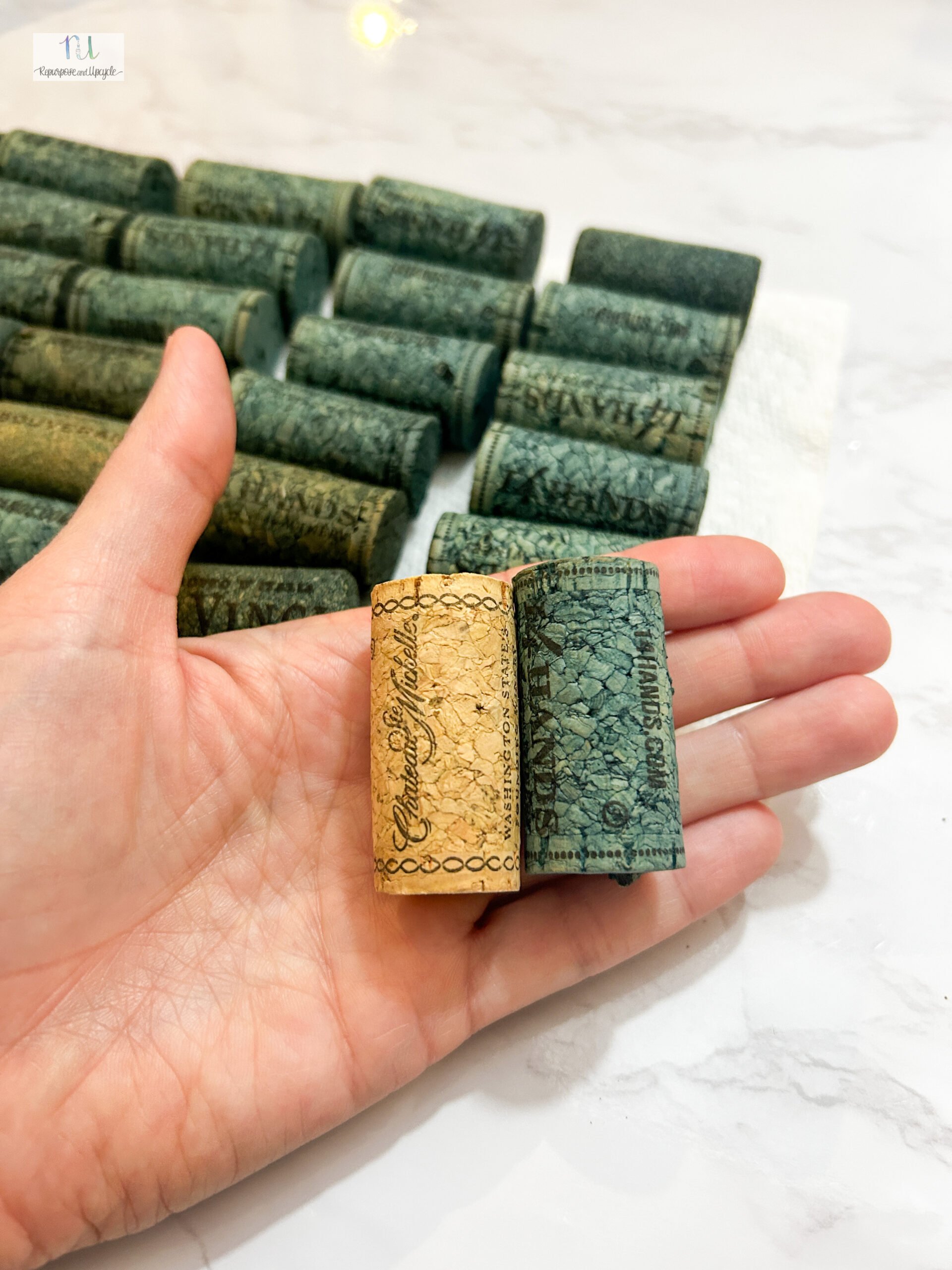Open kitchen shelving has become a popular design choice over the last few years. By exposing dish ware and utensils, open shelving encourages easy access to storing dishes with a different kitchen feel. About ten years ago we started seeing influencers removing their upper cabinets and replacing the space with floating shelves and other types of wood shelves. Even though the “open kitchen shelves” look has always been more popular in Europe than in the United States, it’s starting to gain popularity over here now.
So, is there more to open shelves than looks? Yes! They make kitchen items like everyday dishes more accessible. It’s a great way to keep functional items organized and clean. That being said, removing cabinets reduces storage space. The easiest way to create open shelves in the kitchen is to remove a cabinet door and keep the shelves open and still use a traditional cabinet box, although I don’t love that look.
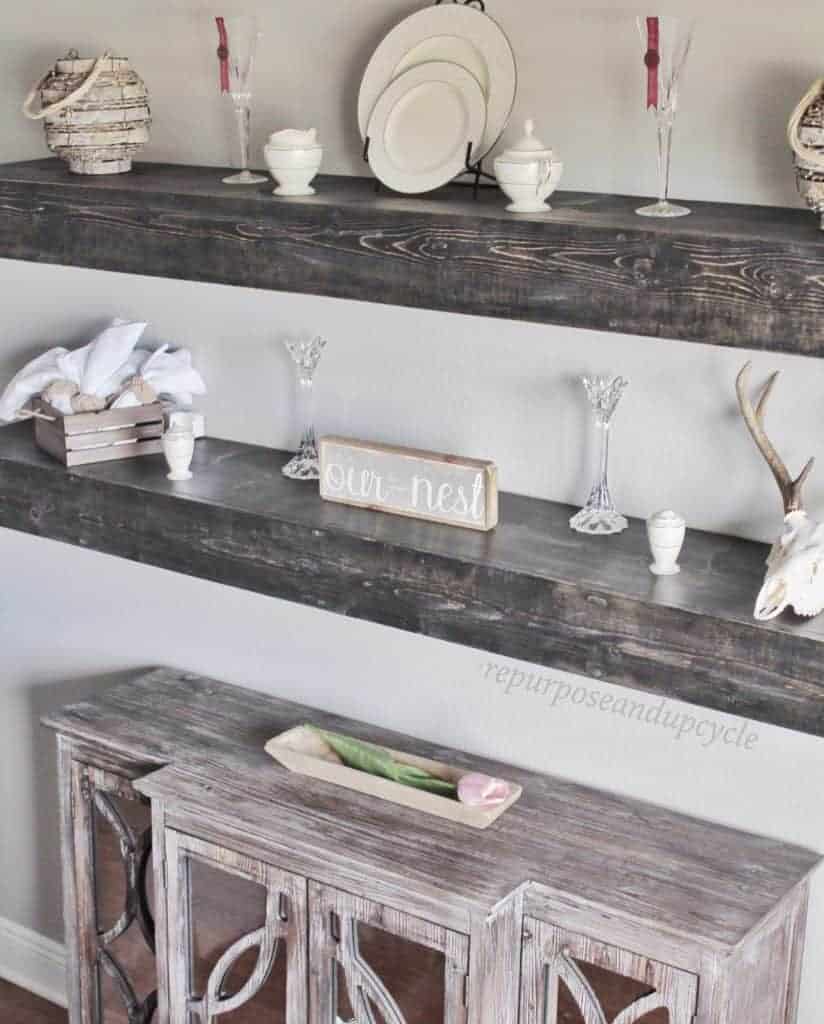
Note that this style requires a level of maintenance to ensure shelves remain tidy and visually pleasing. Oh and the dusting… Without cabinet doors to conceal clutter, kitchenware must be kept neat and orderly. This encourages regular decluttering and can lead to a more curated kitchen space, where every item on display serves a purpose. It also allows the perfect opportunity to add decorative items to your kitchen for display. Just note that, most of the time, open shelves will reduce kitchen storage space.
Benefits of Open Shelves
Do the benefits outweigh the drawbacks for open shelving in the kitchen? Let’s see.
You can see where I removed the fridge and replaced the space with some open shelving. I love how this space functions now. The open wall space makes our small kitchen look bigger too.

I updated this space later on to a coffee bar with a few floating shelves that matched the rest of our house. You can see I added a complimenting cabinet and shelf color to the rest of our white kitchen for variety.
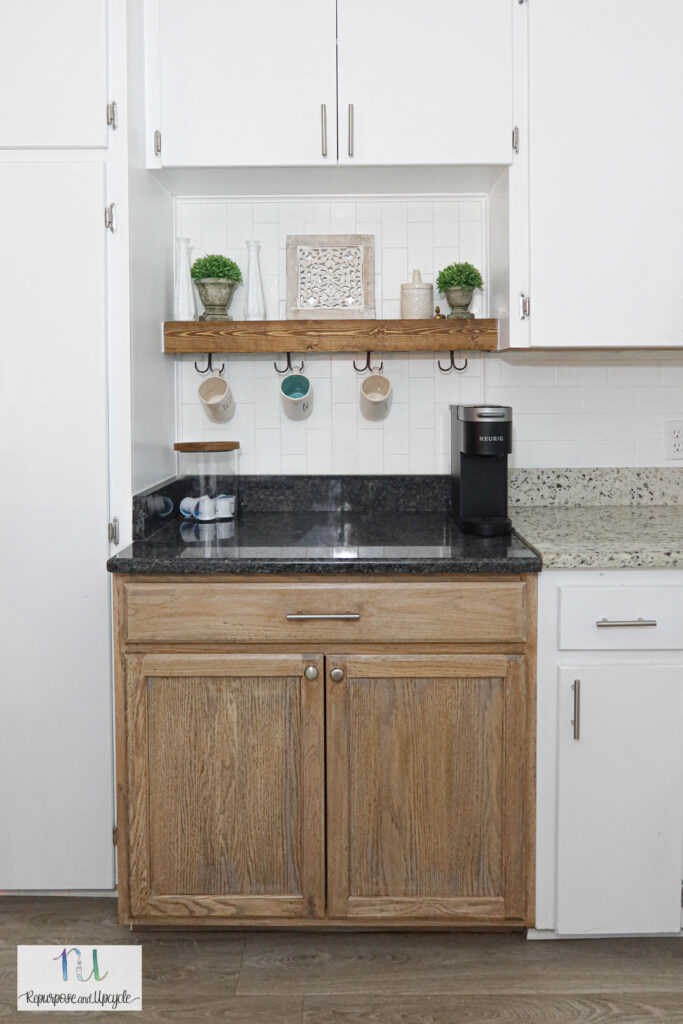
Aesthetic Appeal
Visually, open shelving allows you to display fine china, antiques, or colorful dishware, adding a personal touch to the kitchen. It encourages a minimalist approach, as only the most aesthetically pleasing items are placed on display. Most interior designers opt for a good blend of some open shelving in the kitchen and some closed cabinets for storage.
See more of this modern eclectic beverage bar here.

Color Coordination
Color coordination is crucial to maintaining a cohesive look. Shelves should either match or contrast with the wall color to define space. The use of neutral tones such as whites, grays, or woods can offer a versatile canvas for displaying colorful dishes or decorative objects.
Organizing Open Shelves
Open shelves in the kitchen need strategic organization. Throwing your dishes in a closed cabinet and storing it from eye sight will be no more! Dishes should balance functionality with visual appeal and be maintained regularly to keep the kitchen looking and operating at its best.
Functional Zoning
Organizing open shelves starts with functional zoning, which involves assigning specific sections for different types of items. For example:
| Zone | Items |
|---|---|
| Daily Use | Plates, bowls, cups, and drinking glasses |
| Cooking | Spices, oils, and frequently used ingredients |
| Appliances | Small gadgets like toasters and blenders |
Decorative Arrangements
Here are some Decorative arrangement ideas:
- Plants: Small potted herbs or succulents add a touch of greenery.
- Artwork: Framed prints or small sculptures provide a personalized touch.
You can see how I added a pretty mirror with a few small plants for our coffee bar shelf.

Styling Open Shelves
Proper styling can transform open shelves from mere storage areas to focal points in a kitchen. Not only do they provide functionality, but when styled thoughtfully, they offer a beautiful display.
I created a blog post and video with some tips on how to style open shelves. I shared universal tips that can be used on any open surface really.
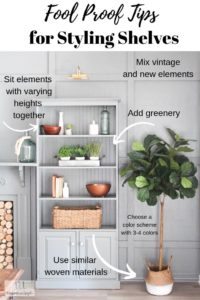
Theme Consistency
Try to keep the same theme when styling a space. A table to help identify theme choices might be:
| Theme Style | Elements to Consider |
|---|---|
| Modern | Clean lines, minimalistic items, metallic finishes |
| Rustic | Natural woods, vintage items, earthy tones |
| Farmhouse | Shabby chic decor, pastel colors, floral patterns |
| Industrial | Exposed pipes, mixed metals, dark tones |
Seasonal Decor
Incorporating seasonal decor onto open shelves can keep the kitchen feeling fresh and in tune with the time of year. For fall, think of adding small pumpkins or autumn-hued vases. During winter, they might feature holiday-themed dishes or silver and white accents. Here are a few examples:
- Spring: Flower vases, pastel bowls, greenery
- Summer: Beach-themed items, light-colored linens, fruit bowls
Lighting Effects
Lighting can significantly affect how open shelves enhance a kitchen’s ambience. You install under-shelf lighting to create a warm glow or place spotlights to highlight certain decor elements. Ways to use lighting include:
- LED Strips: Offer a continuous light, emphasizing the shelf’s length.
- Puck Lights: Provide focused illumination on specific items.
- Fairy Lights: Add a whimsical touch, specifically to glassware or transparent items.
Alternatives to Open Shelves
There are several practical alternatives to open shelves that offer both style and function. If you have small spaces with limited storage,
Closed Cabinets. They offer a clean look, keeping items dust-free and out of sight. Ideal for a minimalist aesthetic, they enhance a kitchen’s sleek appearance.
- Glass-Fronted Cabinets: They blend the visual appeal of open shelving with the protective nature of closed cabinets, showcasing items while defending against dust and grease.
- Corner Cabinets: Utilize hard-to-reach corner spaces effectively, often featuring Lazy Susans or pull-out shelves for accessibility.
Drawers Drawers provide organized storage, with everything in one layer for quick access.
- Deep Drawers: Useful for pots and pans, keeping them easily accessible without the need to stack.
- Custom Organizers: Inserts that sort utensils or plates, preventing clutter and making it simple to find items.
I use my deep drawers in our kitchen to store pots and pans.
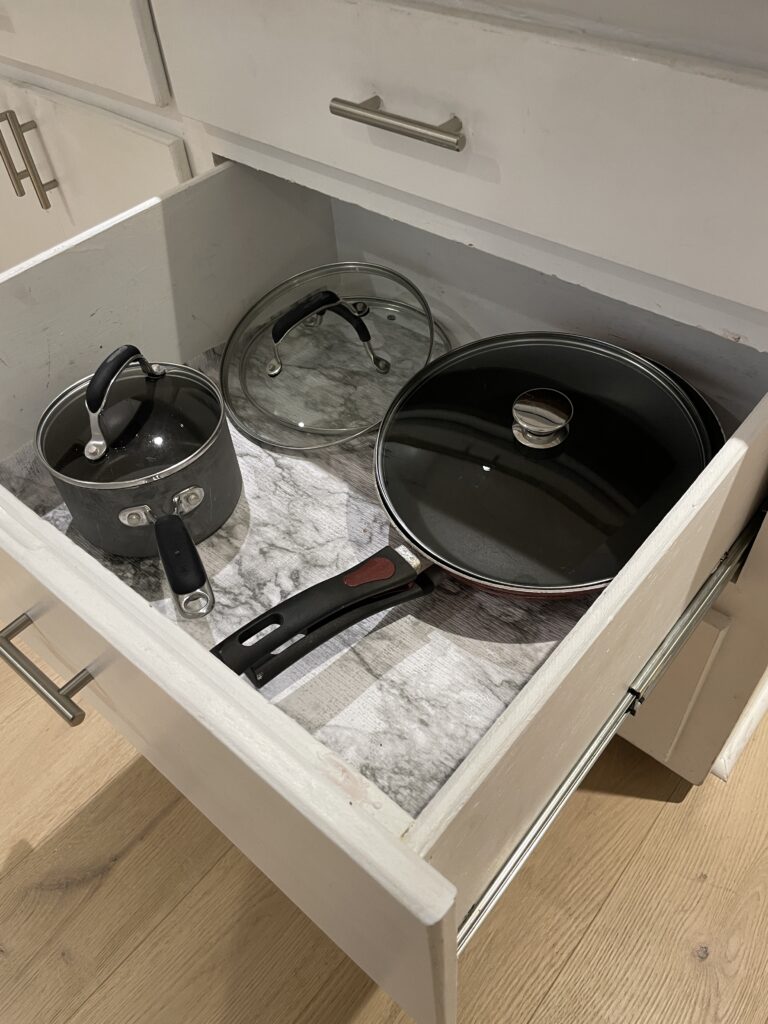
Here’s a handy little list below of the different kitchen storage types.
| Storage Type | Description | Benefits |
|---|---|---|
| Closed Cabinets | Enclosed space with doors | Dust-free, clutter-concealed, sleek appearance |
| Glass-Fronted | Closed cabinets with glass doors | Semi-visible storage, protected display |
| Corner Cabinets | Cabinets designed for corner spaces | Maximized space, enhanced accessibility |
| Drawers | Sliding storage compartments | Layered storage, no stacking required |
| Hutches | Freestanding cabinets with open display top | Traditional look, versatile display/storage |
| Buffets | Low, long storage pieces | Additional surface, mobility |
Open Shelves in the Kitchen- Yay or Nay?
Wether you like open shelving in a kitchen or not comes down to personal preference. Ultimately, I think a balance between a few open shelves and some closed storage is the best option for a clean, clutter free and visually appealing space.
What are your thoughts? Do you love this trend or not?


